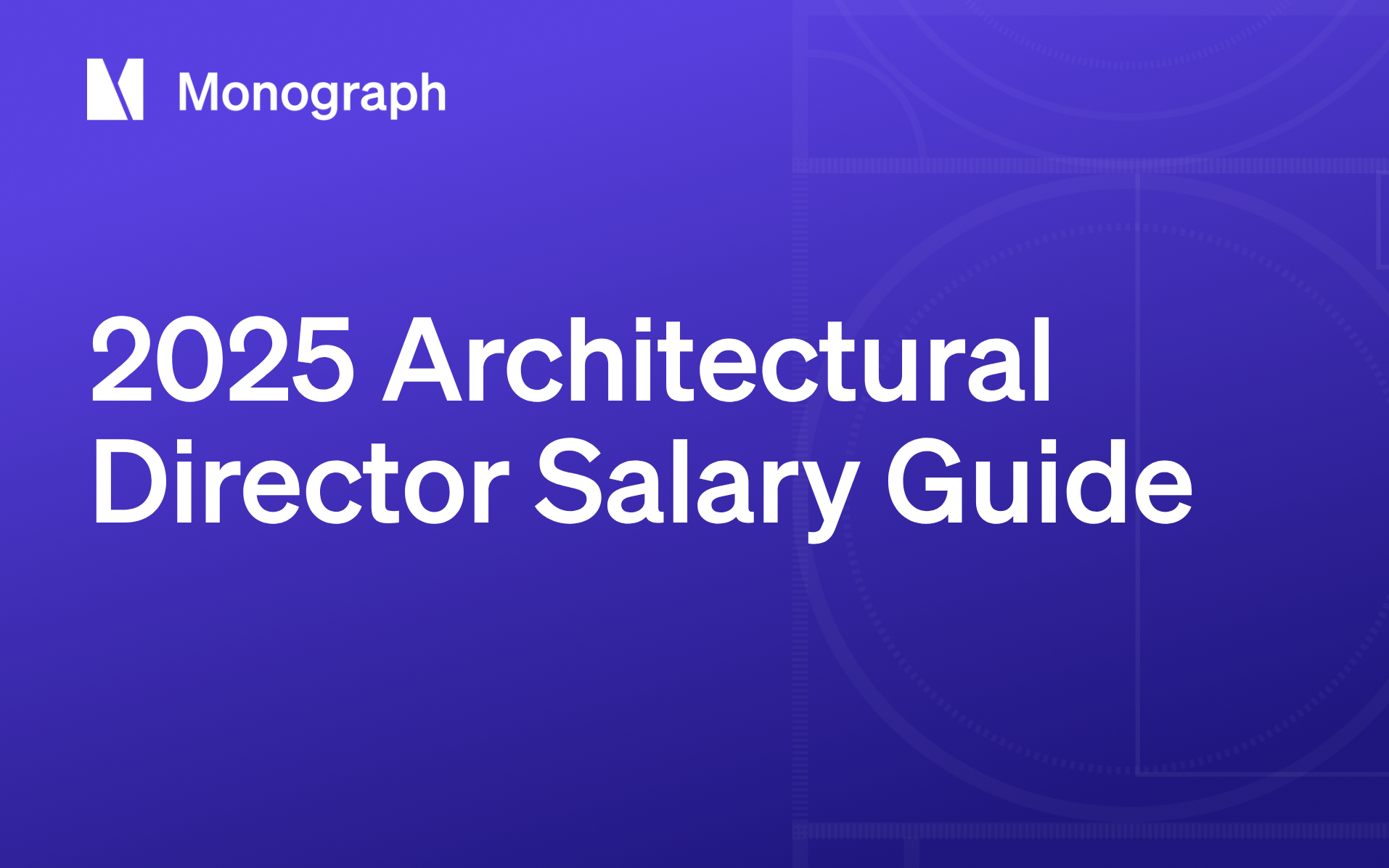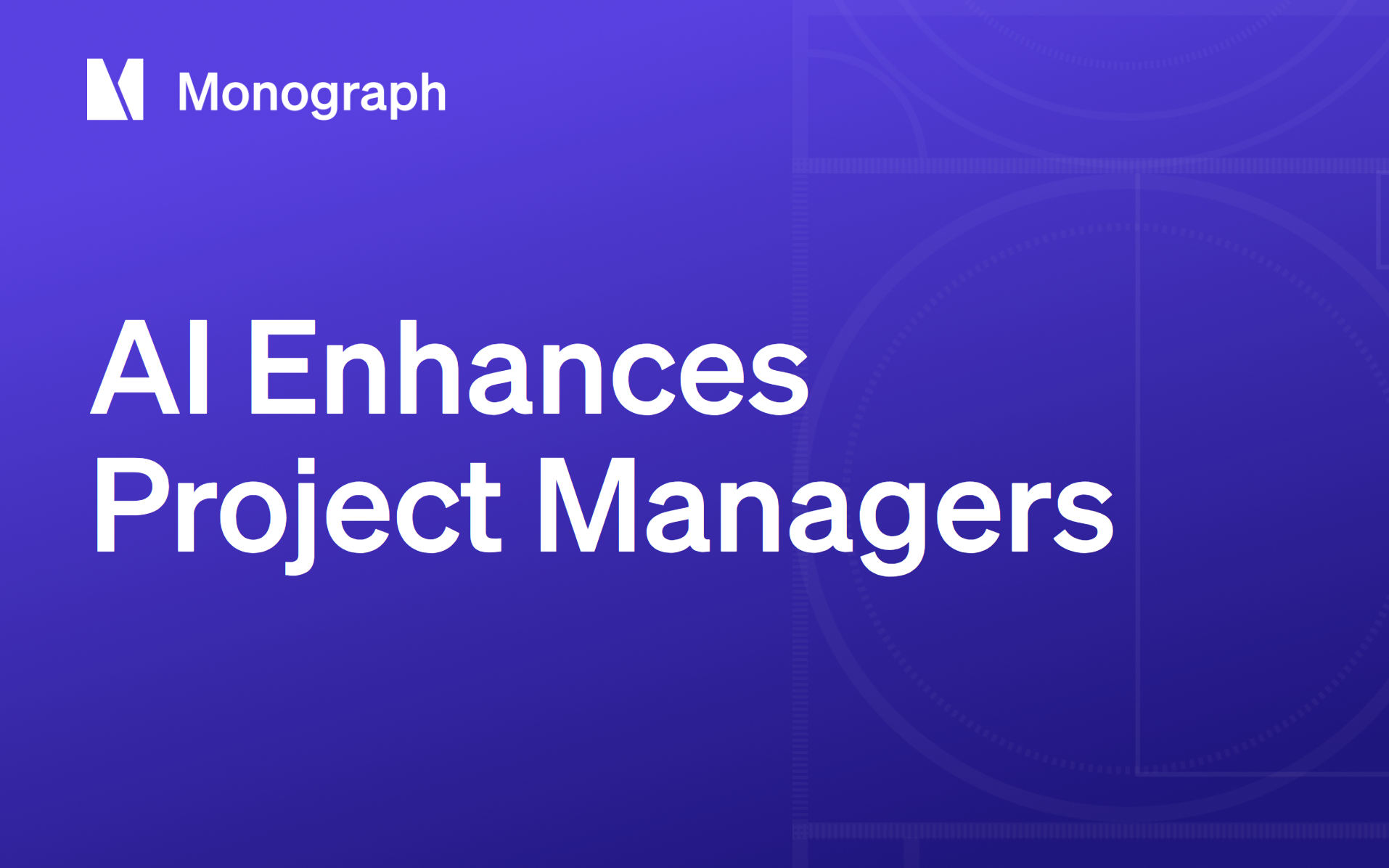Contents
The national median base salary dropped to $160,924 from $164,836 in 2023: a 2.4% decline that hits that much harder when you're already watching margins. Geography still drives the biggest gaps. Directors in San Jose earn $319,300 on average, nearly double the national median according to Comparably's latest architecture compensation data.
Three realities shape every compensation decision you make today. Wages grew just 0.3–1% annually, barely keeping pace with inflation. Remote work disconnected talent from expensive metros. Now you decide whether that director working from Austin deserves San Francisco pay. Specialists in sustainable design often command pay premiums of 30–40% over generalist architects, and these are typically reflected in base salaries rather than primarily through bonuses.
These benchmarks help you pay competitively without destroying project profitability. Whether you're retaining your best people or competing for new talent, current market data translates into ranges you can use immediately.
What Architectural Directors Earn in 2025
If you need a quick reality check before drafting an offer letter, start here. The national median base salary for an Architectural Director sits at $160,924 in 2025, a small dip from two years ago but still in solid six-figure territory. The data shows the 25th percentile at $139,474 and the 75th percentile at $183,700, giving you a tight range to work with for most hires. These figures come from Salary.com's Architecture Design Director dataset and the American Institute of Architects' 2025 benchmarking tools.
Base pay is only the starting point. Annual bonuses typically add $4,000 to $36,000, while profit-sharing or equity arrangements appear more frequently in large or high-growth firms. In high-cost metros like San Jose or New York, total cash packages regularly exceed the $200,000 mark as firms compete for scarce senior talent.
Budget roughly $165,000–$185,000 for base salary to stay competitive in most markets, then add performance incentives to match local cost pressures. Adjust upward for tech hubs or specialized roles, and downward, carefully, for lower-cost regions where talent supply runs deeper.
Why These Numbers Matter for 2025 Compensation Strategy
When you set a director's pay without hard data, you're gambling with both talent and profit. The 2025 figures (median base around $160,924 with a 2.4% slide since 2023) will let you calibrate to reality. Underpay and your best leaders accept offers elsewhere. Overpay and thin project margins vanish before construction starts. Precise benchmarking removes the guesswork.
Consider the real cost of turnover. Losing a director mid-project means more than hiring fees and exit interviews. Lost productivity, delayed decisions, and client hand-holding burn through 10–15% of the entire project value, wiping out months of profit you counted on for growth.
Talent shortages remain acute, inflation still pressures raises, and hybrid-work flexibility has widened the competitive field.
Market-accurate data from the latest AIA Compensation & Benefits Report and AIA Salary Calculator provide a foundation. Walking into negotiations armed with percentile ranges instead of gut feelings closes offers faster and keeps recruiters from circling your team. For operations managers, aligning salaries to median plus local premiums makes project budgeting as predictable as a structural load calc. No surprises, no frantic scope cuts.
Pay bands grounded in solid research protect retention, accelerate hiring, and safeguard the margins that keep your practice thriving.
National Pay Ranges & Percentiles
When you pin down salary bands, you protect profit on every project. The 2025 data combines the AIA Compensation & Benefits Report with large-sample surveys to show a clear national curve for Architectural Directors:
*Bonus and profit-sharing figures from 2025 surveys at ZipRecruiter vary more widely than base pay because firm performance, project mix, and ownership stakes drive the upper limits.
The data combines the AIA survey of 600+ U.S. architecture firms with national datasets from multiple sources. Outliers above $300k were excluded to keep the percentiles realistic for non-principal roles.
Here's how Architectural Directors stack up against their closest peers:
Architectural Engineers land lower on base pay but often close the gap with overtime and project incentives, according to the 2025 architect vs. engineer compensation study.
Use these percentiles as guardrails: if you're budgeting below the 25th percentile in a high-cost metro, expect churn. Target the 50th–75th range, then layer performance bonuses to stay competitive without breaking your fee schedule.
Regional & Firm-Size Variations
Geography drives your director salary baseline more than you might expect. The 2025 spread is dramatic: directors in the West and Northeast consistently out-earn their peers in the South and Midwest, with the national median sitting at $160,924 but swinging wildly by zip code.
The West Coast operates in its own universe. San Jose pays an average $389,935, about 97% above the U.S. norm for Architecture Directors, driven by tech-sector competition and brutal living costs. San Francisco commands a much larger coastal premium, often exceeding 150% above national figures, while Seattle and Los Angeles add a premium of roughly 10–15%. In the Northeast, New York City and Boston Director of Architecture compensation typically ranges from $145,000 to just under $200,000, with $200,000+ more common at the very top end.
Move inland and the math changes. Key findings from 2025 compensation research show:
- Directors in Chicago, Minneapolis, or Dallas often sit 5–10% below the national median
- Growth markets like Austin and Denver trail high-cost coastal cities by roughly 15–20% but climb fast as major firms chase talent in secondary metros
- These emerging markets see the gap shrink quickly enough that ignoring local momentum means losing candidates to coastal recruiters
Firm size creates another layer of complexity. In studios of 20 or fewer staff, a director's base often lands $20k under the median, but partnership profit-sharing frequently makes up the difference. Mid-sized practices (21–75 staff) track closest to national figures, balancing steady pipelines with controlled overhead. Large firms of 76+ still offer the highest base salaries, often north of $180,000, but many freeze pay or offer minimal increases while boosting bonuses and equity pools.
When you build next year's budget, plan for at least a 10% coastal premium in major metros and prepare for outliers like San Jose that can double national averages. Factor in firm-size dynamics, and a competitive package might range from $140k in a regional boutique to $250k in a global firm, before bonuses enter the conversation.
Key Pay Drivers in 2025
Four forces are reshaping architectural director compensation in 2025, and most firms are feeling the pressure from at least two of these factors when setting compensation:
- Inflation pressure: Salaries haven't kept pace with rising costs, pushing firms toward variable compensation (bonuses, profit-sharing, and retention agreements) to maintain total compensation while controlling base salary costs
- Hybrid work complexity: Directors now expect flexible schedules, home-office stipends, and wellness allowances as standard, making total compensation packages more complex than base salary alone
- Specialized expertise premiums: Directors who can manage complex healthcare projects, deliver net-zero buildings, or navigate LEED certification command 10–20 percent more than generalists according to Davron's salary trend analysis
- DEI accountability: Persistent gender and racial pay gaps are driving firms to proactively realign director pay bands, implement structured review cycles, and publish internal salary ranges
These shifts are forcing a fundamental change in how firms structure compensation. When planning 2025 compensation, treat base salary as the foundation, not the complete package. Build in flexible-work benefits, performance pay, specialist premiums, and equity considerations from the start.
When planning 2025 compensation, treat base salary as the foundation, not the complete package. Build in flexible-work benefits, performance pay, specialist premiums, and equity considerations from the start. This comprehensive approach keeps directors engaged while protecting profit margins.
Bonus & Total Compensation Components
If you're budgeting only for base pay, you're missing the real cost of keeping an Architectural Director. The median salary sits around $160,924 in 2025, but that figure covers just 80–90 percent of an experienced director's total package. The rest comes from cash incentives, profit participation, and perks that have become more important as firms compete for talent.
Bonuses are now standard practice. In national firms, annual or quarterly payouts of 10–30 percent of base pay are the norm. Discretionary awards climb past $36,000 when a director lands a marquee project or salvages a difficult schedule. Some practices add multi-year retention bonuses that vest only after project completion. Few directors walk away from six-figure payouts with defined timelines.
Profit-sharing has gained momentum as partners look for ways to reward leadership without inflating fixed salaries. Current industry data shows more firms distributing year-end profits, especially studios with 75+ staff where margins depend on repeat institutional work. Equity stakes remain less common, but they're becoming the preferred incentive for directors with specialized expertise (healthcare code compliance or sustainable design) that commands premium fees.
Cash compensation tells only part of the story. Directors now negotiate a comprehensive benefits package that extends well beyond traditional health coverage:
- Enhanced financial benefits: 401(k) matches reaching 6 percent, expanded mental-health coverage, and executive life insurance packages
- Flexible work perks: Monthly home-office stipends, "work-from-anywhere" weeks, and technology allowances for remote productivity
- Professional development: Executive coaching budgets, conference attendance, and continuing education allowances
- Lifestyle benefits: Wellness stipends, flexible PTO policies, and sabbatical opportunities for senior directors
These perks might look intangible on spreadsheets, but they often determine which offer gets accepted. For your next hire, or to retain the talent you have, treat the headline salary as just the foundation. The complete package includes layered bonuses, profit sharing, and benefits designed to make staying put more attractive than testing the market.
Trendlines & 2026-2028 Outlook
Director-level pay will steady rather than spike over the next three years. Current compensation reports show raises that barely keep pace with inflation. Roughly 0.3–1% annually between 2023 and 2025. With core inflation cooling, most firms will hold the median base near $160K. Expect upward movement only if project backlogs rebuild and interest rates retreat.
This pay restraint creates tension with an ongoing talent shortage. Experienced studio leaders remain scarce. Replacing one director can cost 10–15% of a project's total value in lost productivity alone. Industry data shows firms still bidding 10–20% above market for directors who can land healthcare, life-science, or net-zero projects. Specialist premiums will outlast any economic slowdown.
AI-driven productivity tools are removing routine drafting hours, but they aren't touching leadership pay. Automation makes seasoned directors more valuable, not less. They translate generative options into buildable solutions and client confidence. The wage gap between tech-savvy specialists and traditional generalists will widen over the next three years.
With base salaries flatlining, benefits become your differentiator. Recent compensation surveys show firms adding 401(k) matches up to 6%, expanded mental-health coverage, and hybrid-work stipends to retain senior staff. Total packages where base pay equals only 80-85% of compensation are now standard.
Two scenarios frame 2026–2028 planning. A bullish scenario (where overall market conditions are favorable) could restore 3-4% annual raises. A cautious track may keep increases minimal and shift more compensation into profit-sharing if high rates and soft commercial demand persist.
Your smartest move is proactive budgeting. Refresh salary benchmarks every six months. Model 10% coastal premiums into project proposals. Earmark variable-pay pools now so you're not scrambling when the next must-hire director walks through your door.
Stop Guessing About Project Profitability and Team Compensation
You already know the feeling: juggling five spreadsheets to answer a simple question like, "Can we afford that mid-year salary bump?" Monograph pulls those fragments into a single, phase-based budget that mirrors how your projects actually unfold. At the center is Monograph's MoneyGantt™, which transforms complex financial data into visual intelligence. Picture your familiar Gantt chart with real-time fee and budget data layered over the schedule.
Because every hour is logged against an up-to-date fee target, you can see exactly how a director's $180k salary affects project margin and justify raises when the numbers support them. Real-time invoicing pushes time entries directly to draft invoices, so cash hits the bank faster and profit-sharing pools aren't held hostage by slow billing cycles.
We've worked with 13,000+ architects and engineers across 1,800+ firms who needed this same clarity between compensation and cash flow. Lima-Stanley Design saved 66% of their time on administrative tasks and saw 2x faster billing. leeCALISTI improved their billing process by 4x while cutting budget overages by 25%.
Track team costs against project profits in real time. Book a demo with Monograph.
Frequently Asked Questions
What's driving the decline in architectural director salaries?
The 2.4% decline reflects broader economic pressures including cooling inflation, hybrid work adjustments, and firms prioritizing variable compensation over base salary increases. Directors in specialized roles (sustainable design, healthcare) continue seeing premium pay, while generalist positions face more pressure.
How much should I budget for total compensation beyond base salary?
Plan for 15–25% on top of base salary for a competitive total package. This includes bonuses ($4,000–$36,000 annually), profit-sharing, enhanced benefits, and hybrid work stipends. In high-cost metros, these add-ons can push total compensation 30% above base salary.
When should I consider paying above the 75th percentile?
Pay above the 75th percentile ($183,700) for directors with specialized expertise in high-demand areas: sustainable design, healthcare projects, or complex MEP coordination. Also consider premium pay for directors who consistently land new business or manage your most profitable client relationships.
How do I compete with larger firms for director-level talent?
Focus on total compensation, not just base salary. Offer equity participation, flexible work arrangements, professional development budgets, and direct partnership tracks. Many directors value autonomy and project variety over pure cash compensation, especially those coming from larger, more bureaucratic environments.





